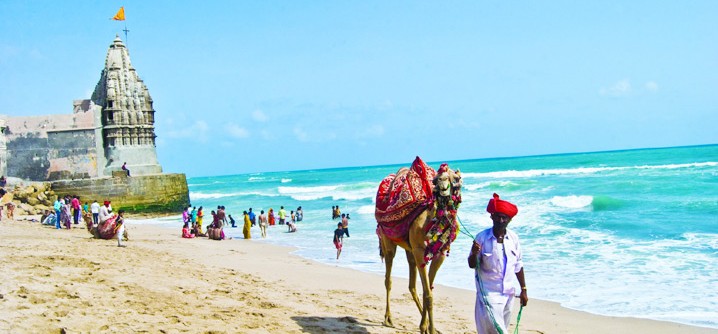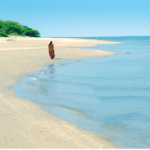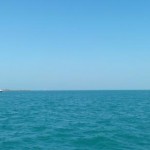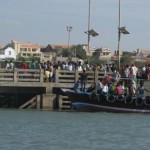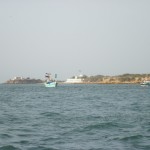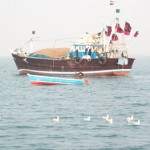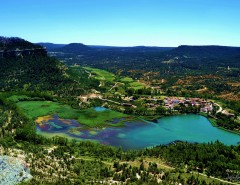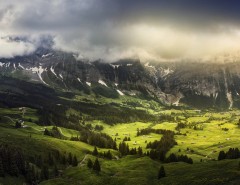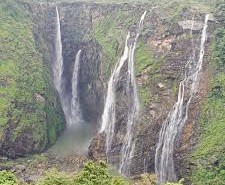Bet Dwarka or Shankhodhar is an inhabited island at mouth of Gulf of Kutch situated 3 km (2 mi) off the coast of Okha, Gujarat, India. The island is measured northwest to southeast in 13 km (8 mi) with an average 4 km (2 mi) in east-west direction. It is a strip of sand and stone situated 30 km (19 mi) north of town of Dwarka.
History
Bet Dwarka marked with other sites of Indus Valley Civilization, Late Phase (1900-1300 BCE)Bet Dwarka is considered the part of the ancient city in Indian epic literature Dvārakā found in Mahabharata and Skanda Purana. Gujarati scholar Umashankar Joshi suggested that Antardvipa in Sabha Parva of Mahabharata can be identified as Bet Dwarka as Yadava of Dwarka said to travel to it by boats. It derived its name Shankhodhar as the island is a large source of conch shells (Shankh). Archeological remains found under the sea suggest the existence of settlement during Late Harappan period of Indus Valley Civilization or immediately after it. It can be reliably dated to times of Maurya Empire. It was a part of Okha Mandal or Kushdwip area. Dwarka is mentioned in the copper inscription dated 574 AD of Simhaditya, the minister of Vallabhi under Maitraka. He was the son of Varahdas, the king of Dwarka.
Bet Dwarka under Baroda state, Amreli division, 1909
The island, along with Okhamandal region, was under Gaekwad of Baroda State. During Indian rebellion of 1857, the Vaghers captured the region in 1857. Later by joint offensive of British, Gaekwad and other princely states troops ousted the rebels and recaptured the region in 1859. After independence of India in 1947, it was integrated in Saurashtra State. Later Saurashtra merged with Bombay State under state reorganization scheme. When Gujarat was created from bifurcation of Bombay State, Bet Dwarka came under Jamnagar district of Gujarat. Devbhoomi Dwarka district was created from Jamnagar district in 2013 so it became part of it.
Archeology
During the investigation In 1980s, the remains of earthen pots and other artifacts of Late Harappan period were found near Sidi Bawa Peer Dargah. In 1982, a 580 meter long protection wall dated 1500 BC was found which believed to be damaged and submerged following seastorm. The artifacts recovered include a Late Harappan seal, an inscribed jar and the mould of coppersmith, a copper fishhook. The shipwrecks and stone anchors found during excavations suggested the historic trade relation with Romans. The temples on the island are built around end of eighteenth century.
Places of worship
Dhwarkadhish Temple and Shri Keshavraiji Temple are major temples of Krishna. Hanuman Dandi and Vaishnav Mahaprabhu Bethak are also pilgrimage places. Sidi Bawa Peer Dargah, Haji Kirmai Dargah and Gurdwara are also situated here. A small temple of Abhyay mata which is situated south side of this island.
- Country – India
- State – Gujarat
- District – Dwarka
- Official Languages – Gujarati, Hindi

